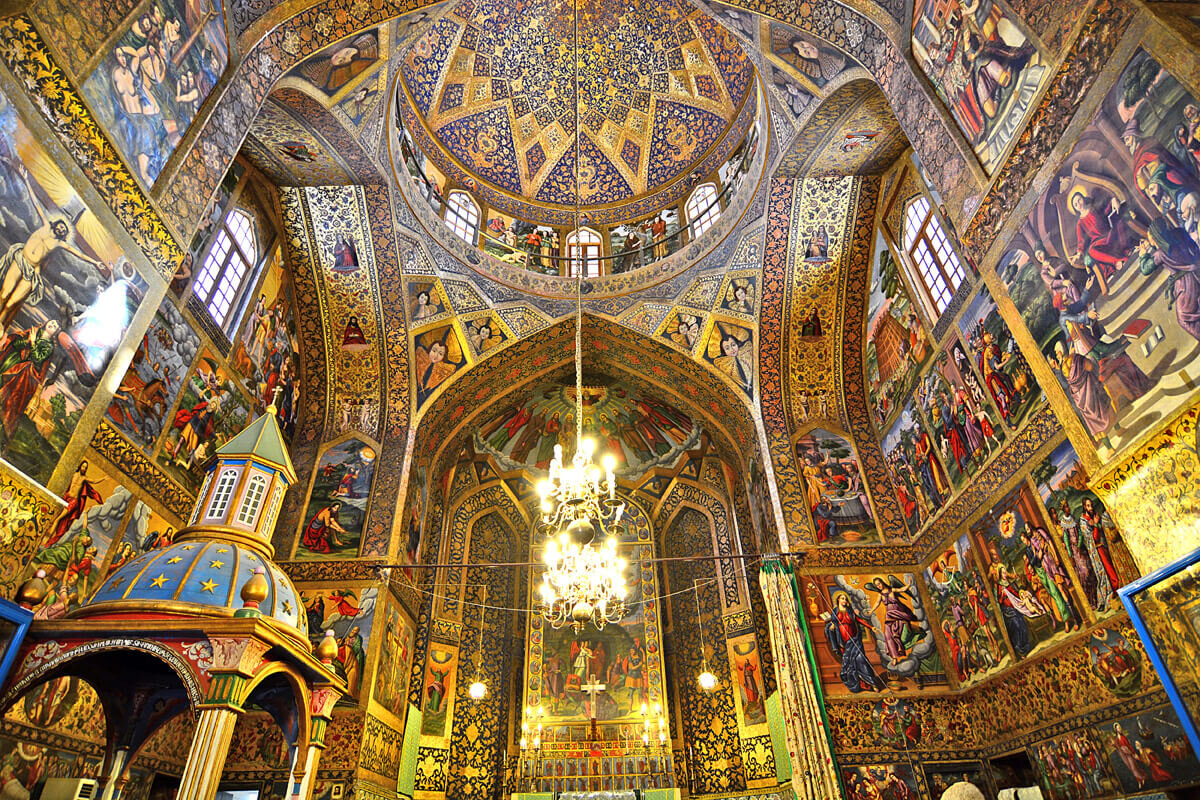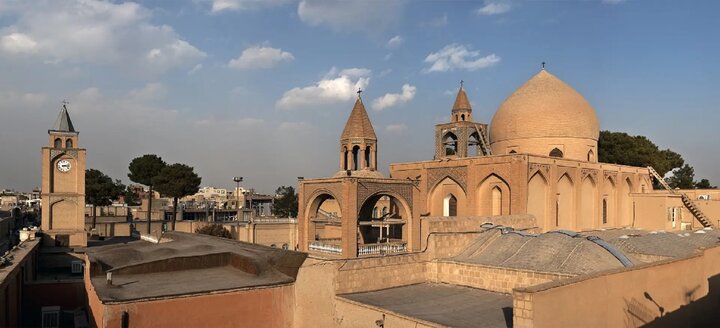Vank Cathedral: A sip of Iran’s rich architectural culture in Isfahan

TEHRAN - The All Saviour’s Cathedral, locally known as Kelisa-ye Vank (“Vank Cathedral”) or the Church of the Saintly Sisters, is probably the most famous example of Christian religious architecture in the ancient city of Isfahan, known as “half the world”.
Located in the Armenian neighborhood of New Jolfa, the relatively vast cathedral is an exemplary specimen of Armenian architectural achievement, representing the different stages of the political, economic, and social status of this minority community in Iran since the mid-seventeenth century.
That place of worship was one of the first churches to be established in Isfahan’s Julfa quarter by Armenian immigrants settled by Shah Abbas I after the Ottoman War of 1603-05.
As mentioned by Archnet, the cathedral has greatly influenced the architecture and decorative treatment of many subsequent and smaller Orthodox churches in the entire Persian-Mesopotamian region.
Construction is believed to have begun in 1606, and completed with major alterations to the original design between 1655 and 1664 under the supervision of Archbishop David.
A must-see for art and architecture lovers, the cathedral, consists of a domed sanctuary much like an Iranian mosque but with the significant addition of a semi-octagonal apse and raised chancel usually seen in Western churches.
The picturesque interior spaces are richly decorated with restored wall paintings full of life and color, including gruesome martyrdoms and pantomime demons.
Overall, the exterior is in relatively modern brickwork and is exceptionally plain compared to its ornately decorated interior with wall paintings and gilded carvings beyond a wainscot of rich tile work, reaching up to its high ceiling and dome.
Narratives say the delicately blue and gold painted central dome depicts the Biblical story of the creation of the world and man’s expulsion from Eden.
In the courtyard, there is a large freestanding belfry towering over the graves of both Orthodox Armenians and Protestant Christians.
Regarding its architecture, the varying fortunes and independence of this suburb across the Zayandeh River (aka Zayandehrud) and its eclectic mix of European missionaries, mercenaries, and travelers can be traced almost chronologically in the cathedral’s combination of building styles and contrasts in its external and internal architectural treatment.
Originally a modest center of Gregorian Christianity in Persia, the church was rebuilt as a magnificent cathedral over the relics of St. Joseph of Arimathia with the patronage of the Safavid emperors.

Prime amongst the other revered and historic churches (Holy Mary, Hakop, George, and the Bethlehem) in Isfahan, the All Saviour’s Cathedral has continued to be the focus of the Armenian Church in Iran.
Inside the magnificent cathedral is a museum, which showcases a historical printing press, and a large library invaluable for research in Armenian and medieval European languages and arts. Moreover, a memorial outside commemorates the genocide of 1915.
Half the world?
Isfahan was once a crossroads of international trade and diplomacy in Iran and now it is one of Iran’s top tourist destinations for good reasons.
When Shah Abbas the Great became ruler of Persia's Safavid dynasty in 1587, he chose Isfahan as his capital and undertook to make it eclipse all other cities. During his reign, he built so many palaces, mosques, gardens, and bridges that the inhabitants boasted: “Isfahan nesfe Jahan”— “Isfahan is half the world.” The subtle nickname implies that seeing Isfahan is relevant to seeing half the world.
Shah Abbas’s immediate successors continued the beautification. According to a contemporary, Isfahan, a city of 600,000, had 162 mosques, 48 colleges, 273 public baths, and no fewer than 1,802 caravanserais — open courtyards surrounded with buildings, which served as medieval tourist parks where travelers could find water for their camels and food and lodging for themselves.
The city is filled with many architectural wonders, such as unmatched Islamic buildings, bazaars, museums, Persian gardens, and tree-lined boulevards. It's a city for walking, getting lost in its mazing bazaars, dozing in beautiful gardens, and meeting people. Moreover, it is renowned not only for the abundance of great historical bridges but also for its ‘life-giving river’, the Zayandeh Road, which has long bestowed the city an original beauty and fertility.
The cool blue tiles of Isfahan's Islamic buildings, and the city's majestic bridges, contrast perfectly with the encircling hot, dry Iranian countryside.
The huge Imam Square, best known as Naghsh-e Jahan Sq. (literary meaning “Image of the World”), is one of the largest in the world (500m by 160m), and a majestic example of town planning. Constructed in the early 17th century, the UNESCO-registered square is punctuated with the most interesting sights in Isfahan.
The square was at the heart of the Safavid capital’s culture, economy, religion, social power, government, and politics. It is hemmed on four sides by magnificent buildings: to the east, the Sheikh Lotfollah Mosque; to the west, the palace of Ali Qapu; to the north, the portico of Qeysarieh; and to the south, the eminent Imam Mosque.
AFM
Leave a Comment